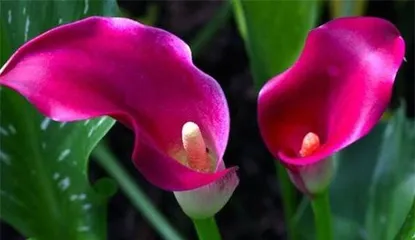The Toxicity of Lotus and Its Indoor Cultivation

Lotus is a popular ornamental plant, but some people are concerned about its toxicity and whether it is suitable for indoor cultivation. To this end, we will explore the toxicity of the lotus and appropriate care methods.
Source of Lotus Toxicity
1.1 The main source of lotus toxicity is the toxic components within the plant, such as lotus alkaloid and lotus leaf alkaloid.

1.2 These components have a certain effect on the human body, but they only pose a health risk when there is significant contact or ingestion of the lotus.
1.3 With proper use and care, the lotus does not pose a major threat to human health.
Is the Lotus Suitable for Indoor Cultivation?
2.1 The lotus grows better in its natural environment, but it can also be cultivated indoors.

2.2 An indoor environment can provide good growing conditions, but it is important to control factors such as temperature, humidity, and light.
2.3 Proper care methods can allow the lotus to grow indoors for a long time without causing significant harm to humans.
How to Properly Care for a Lotus
3.1 The lotus needs plenty of sunlight and can be placed near a bright window or on a balcony.
3.2 The lotus needs an adequate amount of water, but it should not be overwatered to prevent root rot.
3.3 Regular fertilization can provide the lotus with sufficient nutrients, but it is important to use it in moderation to prevent issues such as leaf spotting.
3.4 The soil of the lotus pot should be kept moist, but not too wet to prevent root rot.
3.5 You can use a spray bottle to mist the leaves to keep them moist, but be careful to avoid the flower buds to prevent them from becoming brittle and falling off.
3.6 Regularly clean the dust and dirt from the lotus leaves to keep them clean and hygienic.
3.7 If yellowing, drying, or other phenomena are observed on the lotus leaves, it may be due to improper care methods or lack of nutrients, and the care methods should be adjusted in a timely manner.
How to Prune and Deal with Fallen Leaves of a Lotus
4.1 The lotus will periodically shed leaves and have withered leaves, which need to be cleaned up in time to keep the lotus clean and beautiful.
4.2 Pruning of the lotus should be done in the spring. Overlong or unhealthy branches can be trimmed to facilitate the healthy growth of the lotus.
4.3 After pruning, the lotus can be fertilized and watered appropriately to promote the growth of new branches.
How to Prevent Pests and Diseases of the Lotus
5.1 Common pests and diseases for lotus include aphids, powdery mildew, leaf spot, etc.
5.2 Chemical methods such as insecticides and fungicides can be used to deal with pest and disease problems, but attention must be paid to the usage method and safety.
5.3 Biological control or manual cleaning methods can be used to prevent pest and disease problems.
Precautions for Lotus Maintenance
6.1 The bottom of the lotus pot should have good drainage holes to avoid excessive water affecting the growth of the lotus.
6.2 The pot for the lotus should be of an appropriate size to prevent problems such as root twisting and atrophy.
6.3 The care of the lotus should be timely and moderate; excessive fertilization, watering, etc., should be avoided to affect the growth and health of the lotus.
6.4 In winter, the amount of water for the lotus should be reduced to avoid problems such as waterlogging and root rot.
Artistic Value of the Lotus
7.1 As an ornamental plant, the lotus has a unique artistic value.
7.2 The shape and color of the lotus petals are rich and varied, and can be used as artistic elements in gardens, interior decoration, painting, etc.
7.3 The lotus can also be artistically expressed through photography, illustration, and other methods.
Application of Lotus in Traditional Chinese Medicine
8.1 The lotus is widely used in Traditional Chinese Medicine for its effects of clearing heat, detoxifying, reducing swelling, and alleviating pain.
8.2 The lotus can be used to treat symptoms such as carbuncles and sores, toxic dysentery, and sore throat.
8.3 The lotus can also be used in traditional Chinese medicinal drinks, face masks, and other applications.
Through the discussion of the toxicity of the lotus, indoor cultivation, and proper care methods, we can conclude that although the lotus has certain toxicity, it does not pose a significant harm to the human body under proper care methods. At the same time, as a beautiful ornamental plant, the lotus also has important significance in art and Traditional Chinese Medicine.